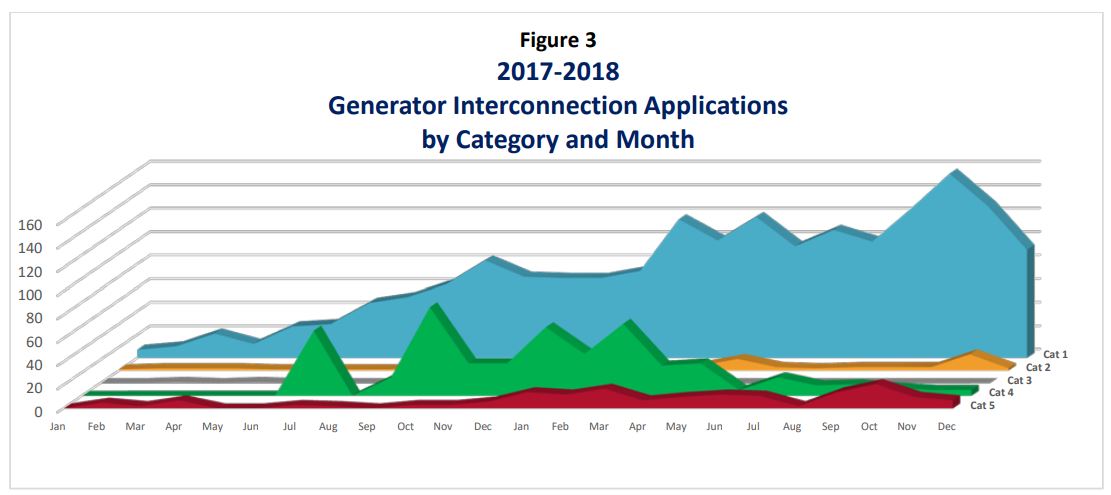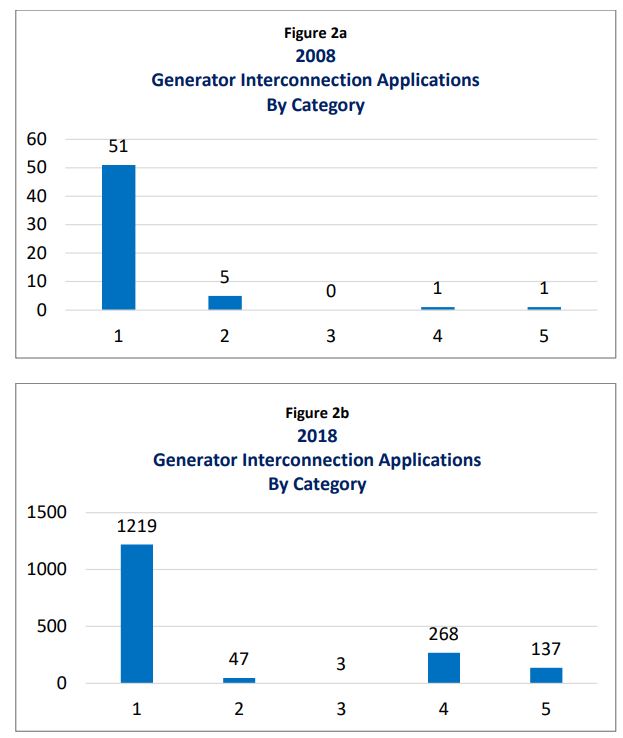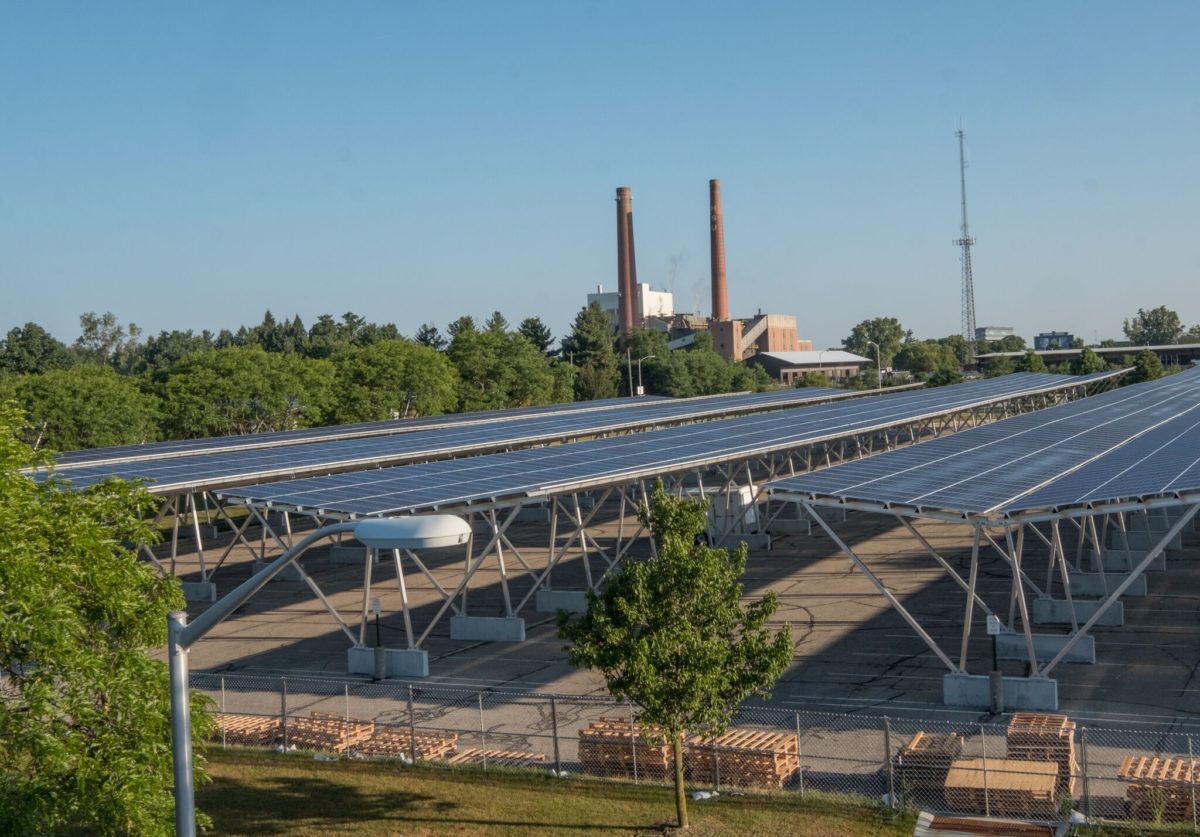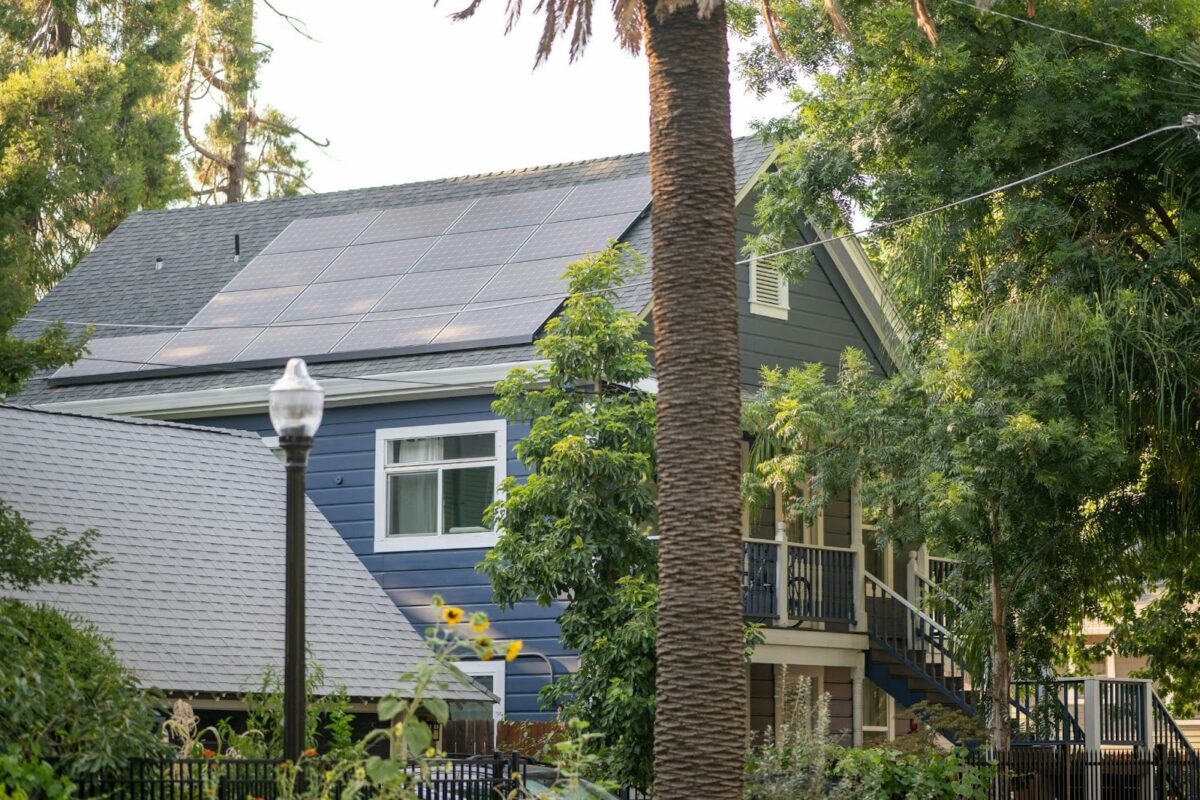It is difficult to get a man to understand something, when his salary depends upon his not understanding it! – Upton Sinclair
Michigan electric utility Consumers Energy has applied for a “partial waiver of the Electric Interconnection and Net Metering Standards” with the state’s Public Service Commission (PSC). The filing (Case No. U-20444 – 28 page pdf) noted that between 2008 and 2015 interconnection applications grew from 58 to 259. However, in the past two years:
The total number of annual interconnection applications submitted to Consumers Energy has increased exponentially. All told, the Company received 2,435 interconnection applications in 2017 and 2018…That is more than three applications per day, every single day, over a two-year period…The increase in interconnection applications that began in 2017 was too substantial, and too sudden, to allow the Company to respond with an immediate corresponding increase in resources and staffing.

The company stated,
First, the scale of the problem was not truly known to the Company until 2018…Nor could the increase in applications experienced in 2017 and 2018 have been predicted by the
Company in earlier years.
If the company had followed the linear growth trends of 2008 through 2016, then 230 and 252 applications would have been expected in 2017 an 2018, respectively. And had that linear growth continued into the future:
the annual total of interconnection applications actually received in 2017 (weren’t projected) until around 2040, and it would not have reached the annual total of interconnection applications actually received in 2018 until after 2097.
The document noted that Not only has there been a sharp increase in overall demand for interconnection, but demand has shifted in the past two years to larger and more complex projects (see image below), than in prior years. The utility noted that of more than 100 generating facilities larger than 1 MW currently interconnected with Consumers Energy’s distribution system, only three are solar facilities. Yet, as of the day of the report, more than 540 outstanding interconnection applications for facilities larger than 1 MWac involve solar projects. Specifically, these larger projects were called out as being a heavy strain on resources as they take longer periods to analyze.
And while the larger projects received the most attention, all system size categories have increased since 2008 – with residential increasing 2,300%.

The report also noted that there were challenges on the side of developers as well, as applications in the queue hadn’t necessarily followed through on documents complementing their applications, fees paid and other issues. In the case of one developer that had submitted more than 150 interconnection applications – the applications had been submitted with one-line engineering diagrams “sealed” by a professional engineer whose license had expired at the time the application was received.
Specifically, the utility notes that “Interconnection Standards prescribe time periods in which the Company must review and process interconnection applications.” Per state law, all interconnection applications, the Company must review the application and determine whether it is complete within 10 working days. Then, depending on project size, engineering reviews and distribution system studies must also be completed in defined time frames. For instance, a Category 4 system of “greater than 550 kWac and not more than 2 MWac” must have its engineering review completed within 25 working days, and the distribution system study completed with 45 working days.
The source of the news, Peter J Cavan of Centrica, noted it most simply – “can’t handle new solar”. As noted on Friday, wind+solar+storage will bring “massive disruption” – and it’s just getting started folks.
https://twitter.com/PJCavan/status/1088200651962765313
This content is protected by copyright and may not be reused. If you want to cooperate with us and would like to reuse some of our content, please contact: editors@pv-magazine.com.








In other words they are losing demand, profit fast which they see as bankrupting them. And they are right!
So they bring up the excuses.
But they better understand this is the future so get rid of soon and stranded assets while they might have some value, pay down debts before it is too late.
And shows what I’ve been seeing quite a while, businesses seeing they can look good with solar and make/save better money that many of their main products/$ investment.
Looks like Florida is going open competition grid like Texas with a constitutional amendment on the ballot in 2020. Tampa Bay Times Sunday business.
And last solar one got 76% of the votes IIRC.
And in Florida, southern US, solar, battery, EV and RE fueled generator rarely needed, easily handles most people’s needs at low cost.
It would be interesting to see a graph of Watts per year.
Viva la revolución!
Their yearly connection requests were:
2015: 259
2016: 215
2017: 691
2018: 1744
Pretty good growth curve.
Hard to believe that with the 6.7 million customers that Consumers serve, a couple thousand would be that difficult to deal with. Methinks they’re doing a pre-emptive strike to nip this trend in the bud before it actually makes a difference to their bottom line.
It definitely seems like they are setting up a delay, but I can also understand part of it. Two years ago they only had 1 project per working day. Even in 2017 they only had 2 per working day. Now they have gone to nearly 7 per working day. They have also had an escalation in large projects (greater than 1MW) to 455 projects. So, they are now supposed to process nearly 2 large projects per day. Along with nearly 5 small (probably roof top) projects per day.
In 2018 they had nearly as many large projects as they had total projects in 2017.
But, they still need to hire enough people to deal with the new normal.
Yes, they need to hire more to handle more but those new resources need to be recognized by the MPSC and accounted for. The distribution system reviews are needed to protect the integrity of the grid, more on the distribution side than the transmission side. For many solar systems including my own, if the grid is down, my solar is down and I do not desire that. Line voltage regulators, auto boosters, capacitor banks, etc are in the mix. So are all the protection devices and schemes used to protect the system. Eventually, I hope, there is so much renewable production that the substations need to be modified to account for reverse flow in a short time frame (wind picks up, clouds go away). The distribution system is designed for one-way flow, out to the customers. Reversing it can be done, but there are costs and with any large organization, it takes time. There is probably much more behind the scenes. The role of the Electric Company is changing.
The times are a changing man!
Michigan utilities been bitching about solar for ages, 20 plus years, especially and largely – nuclear aspect of it…. Go solar gorilla! Add solar to your house but add batteries and use it all, do not gridtie it!!!😝
Wanted: teeny tiny violin to play for the poor utility
Consumers is being disingenuous. They, in partnership with DTE created this spike in applications when they manipulated the Public Utilities Commission into changing the rules for net metering. People scrambled to get their projects designed and their interconnection applications in before June 2018 so they could qualify for the grandfather clause that would allow them true net metering for the next ten years. Now Consumers is crying that they didn’t see this coming? This is a problem of their own creation.
A simple solution would be for the Commission to restore true net metering to relieve the pressure that’s giving Consumers such grief. My guess is that Consumers would quickly hire the ten or so extra employees needed and wipe their crocodile tears.
Living in Michigan with net metering has always been a bragging right to the friends and family who live in states with none. I tell them, our state is progressive! Come live here!
Now I hear net metering is being altered or chopped.
This is the worst time to do this. We need solar jobs, solar investments in our state, and net metering helps make it more affordable to the lower income families. Myself included.
I was able to put panels on my home with a great loan that has lowered my bill and puts my extra energy back into my neighbors’ houses.
I see each Private Solar Home as a helping hand to the precarious condition of our grid.
If we were trying to bring the power companies down we would indeed get a few backup batteries and disconnect completely. We need power companies as much as they need us.
My personal concern has always been the environmental impact of the burning of fossil fuels and the lackadaisical behavior of the power companies over the last 50 years to acknowledge that the way they are making energy has changed the planets weather patterns and atmospheric normalcies and the need to modify their behavior more quickly. Like lead in gasoline and cigarettes, which all took so long to rectify the systematic poisoning of the population for irresponsible monetary profits. As someone who has developed asthma since moving to Michigan, I am extremely concerned with the air quality.
As concerned intelligent people have learned, and watch now as the destructive weather patterns have severely worsened over generations, we with a conscious feel going solar is one way to help. I look at the power companies as struggling companies who cannot get stabilized fast enough to correct a situation (our weather patterns) that is deteriorating rapidly. By cutting back or eliminating net metering is turning a friend into foe. People who put solar on their houses spend a lot of their own money to help create clean energy and clean the air. Most will be paying this off for years.
It seems unjust and unconstitutional to have the energy companies decide what an individuals energy is worth.
Until the grid is stable and clean I think every individual who invests in a clean form of energy on their own property should be compensated on an equal in equal out payment.
The energy companies did not supply their panels, the customer did. If they don’t value the energy of the private sector they may well indeed lose for them to that back up battery and they leave the equation completely.
I see that scenario and being considerably worse for us all.
I can only hope the Michigan Public Service Commission Members keep Michigan’s current net metering program in place.